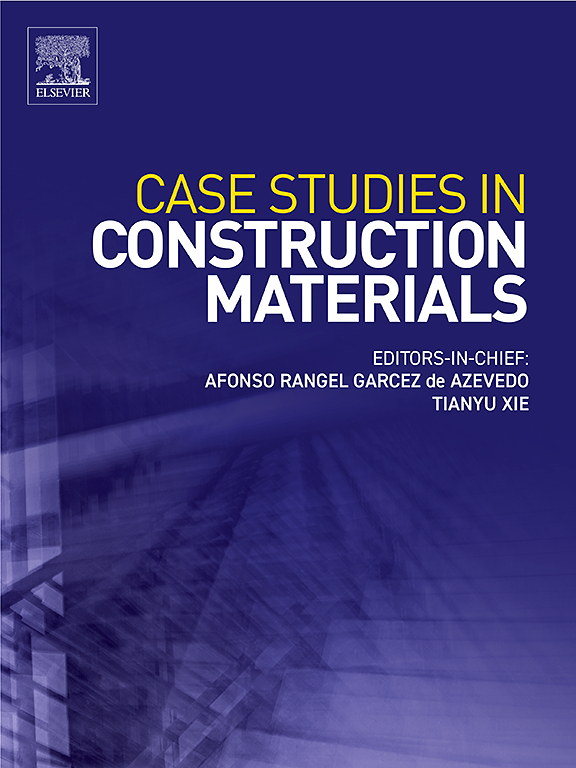Grouted dense skeleton concrete: Development and performance influence mechanism
IF 6.6
2区 工程技术
Q1 CONSTRUCTION & BUILDING TECHNOLOGY
引用次数: 0
Abstract
Grouted dense skeleton concrete is formed by grouting of cementitious paste to the pre-placed aggregate skeleton. This type of concrete is desirable for site conditions with restricted access of conventional concrete delivery and placement, however, the quality control is often challenging due to the difficulty in controlling the groutability. This study examined the desirable aggregate mixes by dividing the aggregate of 5–25 mm size range into four size fractions and blending them at various proportions to form the pre-placed aggregate skeleton. Grouted dense skeleton concrete mixes were produced with different combinations of aggregate size fractions and w/c (water-to-cement) ratios. The groutability, compressive and flexural strength, and durability in terms of electric flux and carbonation of the grouted dense skeleton concrete were measured. Quantitative analysis revealed that the groutability was governed by the paste flowability and the aggregate skeleton voids ratio, the compressive strength and electric flux were mainly governed by the concrete permeable voids ratio and aggregate skeleton voids ratio, and the flexural strength and carbonation depth were solely governed by the concrete permeable voids ratio. To produce grouted dense skeleton concrete with satisfactory fresh and hardened performance, aggregate skeleton with wide particle size range and paste with high flowability are advisable.
灌浆密骨架混凝土的发展及其性能影响机理
灌浆密实骨架混凝土是将胶凝膏体灌浆到预浇筑的骨料骨架上形成的混凝土。这种类型的混凝土适用于常规混凝土输送和放置受限的现场条件,然而,由于难以控制可灌浆性,质量控制往往具有挑战性。本研究通过将5-25 mm粒径范围内的骨料分成4个粒径分数,并按不同比例混合,形成预放置骨料骨架,考察了理想的骨料混合料。灌浆密骨架混凝土混合料具有不同的骨料粒度和w/c(水灰比)组合。测定了灌浆后密骨架混凝土的可灌浆性、抗压强度、抗弯强度、电通量耐久性和碳化性能。定量分析表明,浆料的可灌浆性受浆体流动性和骨料骨架空隙率的影响,抗压强度和电通量主要受混凝土渗透空隙率和骨料骨架空隙率的影响,抗弯强度和碳化深度仅受混凝土渗透空隙率的影响。为生产新鲜硬化性能满意的灌浆密骨架混凝土,宜选用大粒径范围骨料骨架和高流动性浆料。
本文章由计算机程序翻译,如有差异,请以英文原文为准。
求助全文
约1分钟内获得全文
求助全文
来源期刊

Case Studies in Construction Materials
Multiple-
CiteScore
7.60
自引率
19.40%
发文量
842
审稿时长
63 days
期刊介绍:
Case Studies in Construction Materials provides a forum for the rapid publication of short, structured Case Studies on construction materials. In addition, the journal also publishes related Short Communications, Full length research article and Comprehensive review papers (by invitation).
The journal will provide an essential compendium of case studies for practicing engineers, designers, researchers and other practitioners who are interested in all aspects construction materials. The journal will publish new and novel case studies, but will also provide a forum for the publication of high quality descriptions of classic construction material problems and solutions.
 求助内容:
求助内容: 应助结果提醒方式:
应助结果提醒方式:


